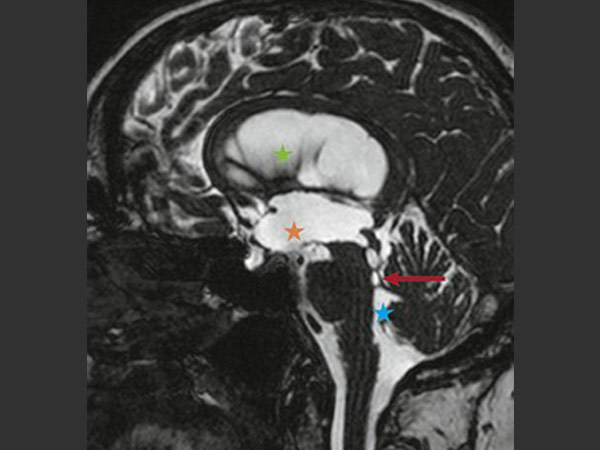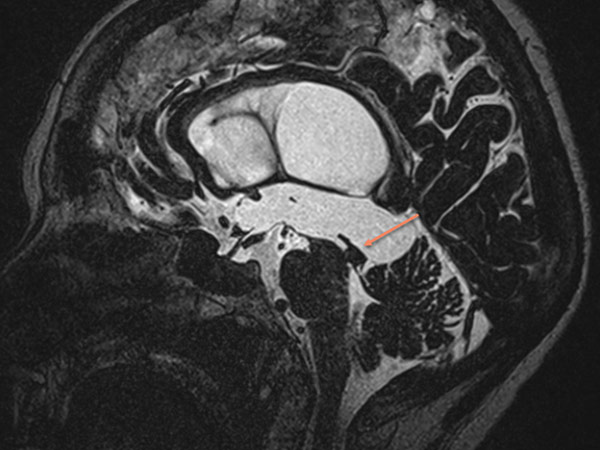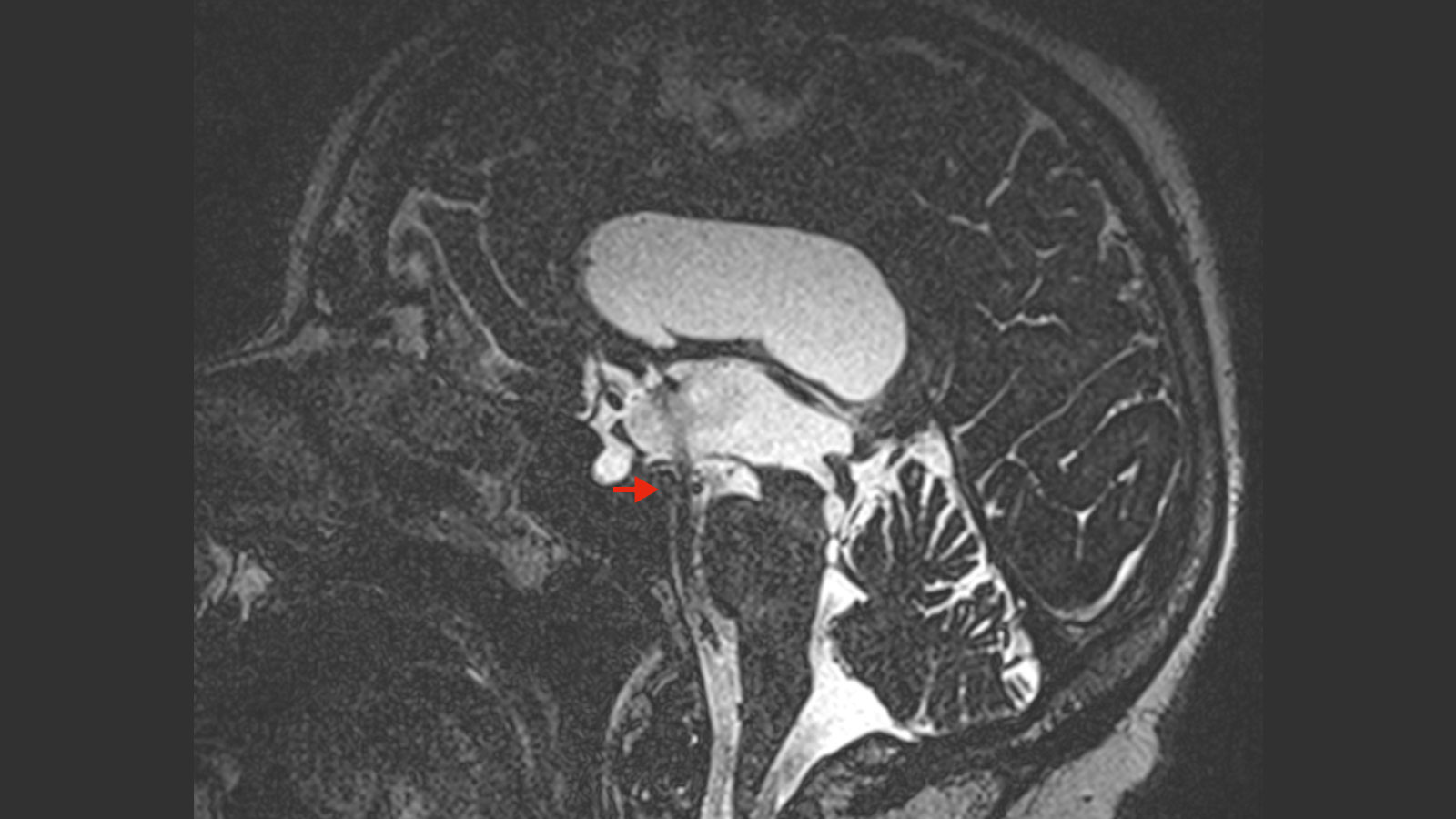Aqueductal stenosis is a narrowing (stenosis) of the small connecting duct between the 3rd and 4th cerebral ventricles along the midbrain. The stenosis results in a buildup of cerebrospinal fluid and a dangerous increase in intracranial pressure, which manifests itself in neurological disorders. Modern neurosurgery offers various surgical procedures to treat this clinical picture. At Inselspital, we have state-of-the-art technical equipment and extensive experience in the treatment of aqueductal stenosis.
How great is the risk for aqueductal stenosis?
About 70% of aqueduct stenoses are congenital and usually become symptomatic in childhood. But However, there are also patients in whom aqueductal stenosis does not cause symptoms until later adulthood.
Statistically, the incidence of congenital stenosis is 1 in 5000 births, although the incidence varies widely worldwide. Aqueductal stenosis may also be genetic in the rare, X-linked Bickers-Adams-Edwards syndrome.
What causes aqueductal stenosis?
The ventricular system of the brain is the continuation of the spinal canal into the brain. It is composed of the four cerebral ventricles, which are filled with cerebrospinal fluid (CSF) and lined with a thin layer of cells called ependymal cells. We distinguish between:
- 1st and 2nd ventricles (the paired lateral ventricles) each with connection via the foramen interventriculare (foramen Monroi) with the
- 3rd ventricle, which in turn is connected by the approximately 1 mm narrow aqueductus mesencephali to the
- 4th ventricle, which is connected to the external cerebrospinal fluid spaces.
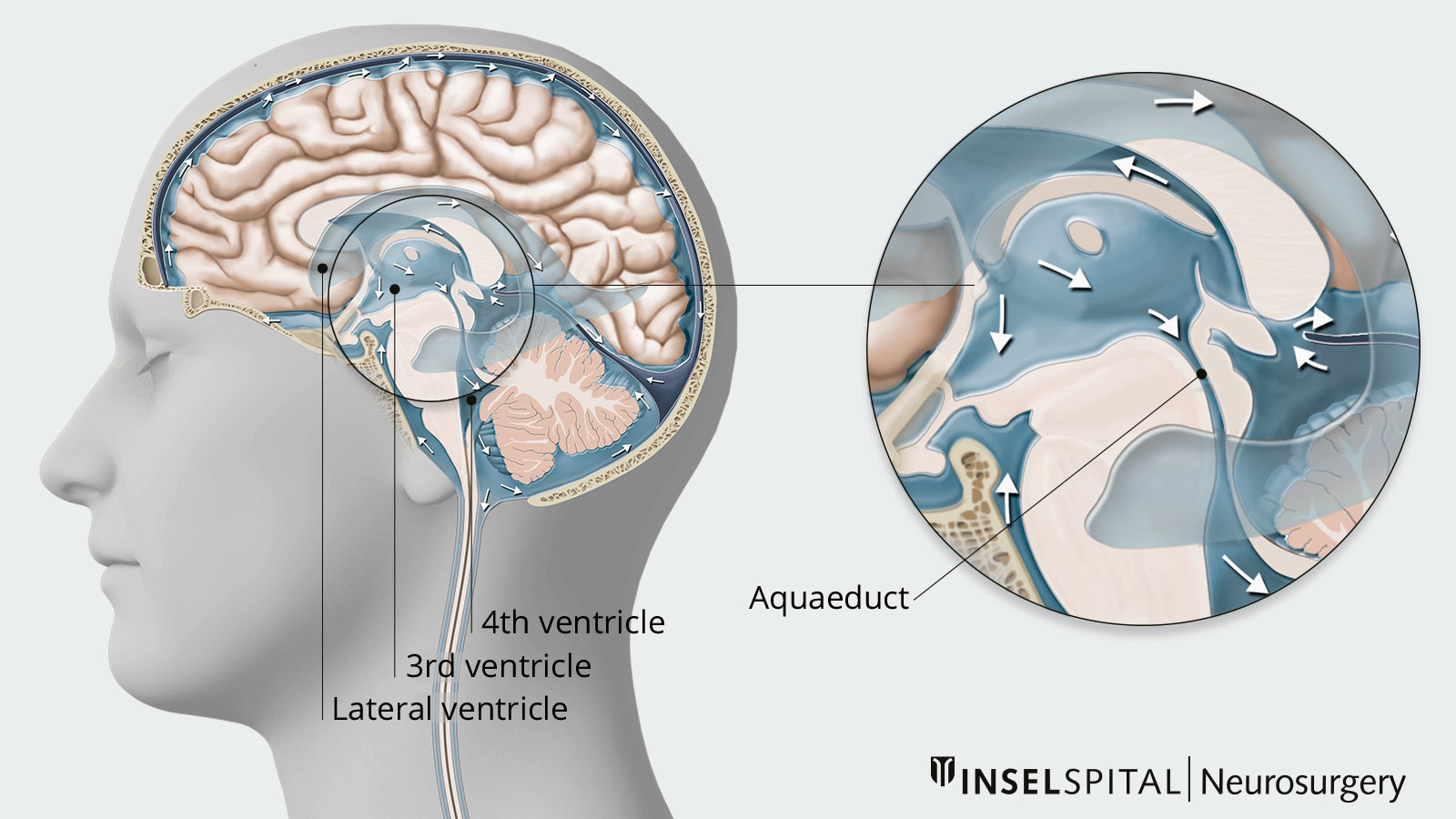
CSF is formed in the choroid plexus, which is located in all four ventricles of the brain. From there, the cerebrospinal fluid enters the subarachnoid space with its dilations, the so-called cisterns. The entire CSF space holds about 150 ml of CSF (20% in the ventricles and 80% in the subarachnoid space). This quantity is completely exchanged several times a day, so that approximately 500 ml of CSF are produced per day.
The aqueduct stenosis leads to an interruption of this cerebrospinal fluid flow. This leads to a buildup of cerebrospinal fluid. This in turn causes the intracranial pressure to rise steadily.
Aqueductal stenosis may be congenital or acquired:
- Congenital stenosis may be due to congenital narrowing, membranous septum, or periaqueductal gliosis, which is a pathological accumulation of glial cells in the aqueductal region.
- Acquired stenosis may be caused by cerebral hemorrhage, brain injury, or inflammation. In addition, the aqueduct may be narrowed by a nearby cyst or tumor.
What are the symptoms of aqueductal stenosis?
In adults or adolescents, a gradual symptomatology is usually observed. Typical complaints are:
- Headache
- Nausea and vomiting
- Visual impairment
- Changes in character
- Cognitive or memory disorders
- Difficulty walking
- Sometimes epileptic seizures
In infants, CSF accumulation manifests itself in the form of an increase in head circumference (hydrocephalus). In addition, developmental delays may occur.
In the context of decompensation, where the symptoms become overt and can no longer be compensated for by the body, there is a marked manifestation of intracranial pressure symptoms with severe headache, nausea and vomiting with clouding of consciousness up to coma. If left untreated, the severe neurological symptoms can even lead to death in rare cases.
How is aqueductal stenosis diagnosed?
In the case of congenital aqueductal stenosis, fetal hydrocephalus can be detected by ultrasound at the prenatal stage if the stenosis is pronounced enough.
In the case of acute decompensation, initial imaging is performed by computed tomography (CT) of the skull. Typically, a triventricular occlusive hydrocephalus with dilatation of the lateral ventricles and the 3rd ventricle but normal size of the 4th ventricle is seen.
Magnetic resonance imaging (MRI) is considered the gold standard. It typically shows triventricular occlusion hydrocephalus with dilatation of the lateral ventricles and the 3rd ventricle and normal size of the 4th ventricle. In addition, the MRI can clearly show membranes that close the aqueduct as well as compressing cysts or tumors. In certain sequences, the absence of the flow signal in the area of the aqueduct can also be documented.
How is aqueductal stenosis treated?
In rare cases, aqueductal stenosis may lead to acute decompensation with the aforementioned severe signs of intracranial pressure. In this case, the intracranial overpressure must be relieved via an external CSF drainage (ventricular drainage) until the final surgical therapy.
Endoscopic third ventriculocisternostomy
In general, the goal is to ensure internal CSF outflow. The method of first choice is endoscopic third ventriculocisternostomy, in which the narrow bottom of the 3rd ventricle is opened endoscopically so that the CSF can drain directly into the prepontine cisterns and from there further into the other extraventricular CSF spaces. This procedure is a gentle, minimally invasive, low-risk operation that is successful in up to 80% of cases in adults. In infants, the success rate is significantly lower at 60–70% and in babies it is only about 50% depending on age.
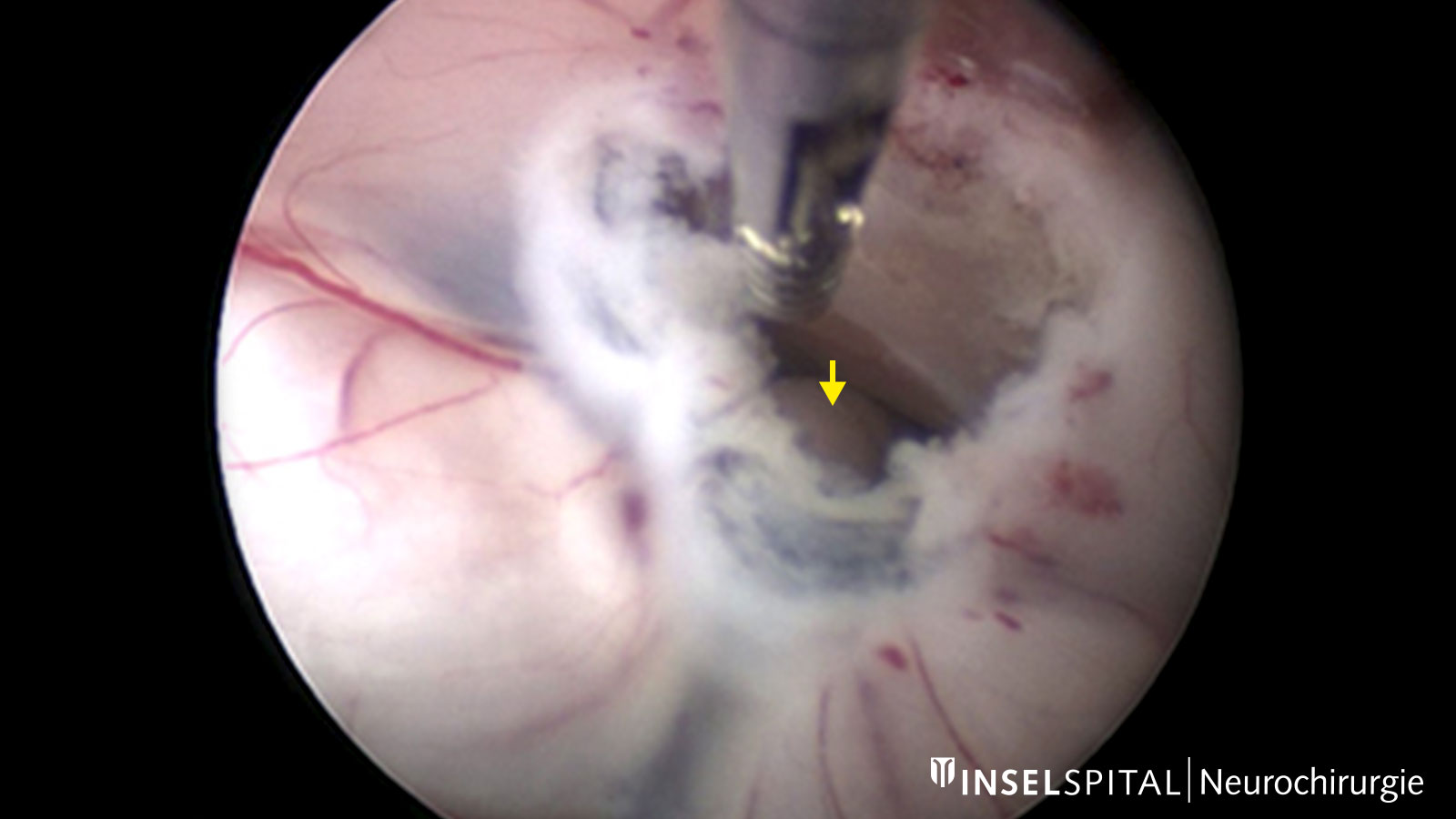
Implantation of a ventriculoperitoneal shunt
If the opening or closure of the stoma is unsuccessful, a ventriculoperitoneal shunt is implanted in a second step. The shunt is implanted in the (usually right) lateral ventricle with subcutaneous drainage from cranial to retroauricular (behind the ear) via the clavicle into the peritoneum.
The disadvantage of this treatment is the dependence on the shunt system, which usually needs to be modified, repaired or renewed several times during the patient's lifetime.
Resection
If the narrowing of the aqueduct is due to a tumor or cyst, resection of the compressing space may already be sufficient to restore CSF flow.
Our experience at Inselspital
We have many years of professional experience in the diagnosis and surgical treatment of aqueductal stenosis with the latest technical equipment. By consistently developing our surgical expertise, we are able to guarantee our patients the best possible diagnosis and treatment.
-
Cinalli G, Spennato P, Nastro A et al. Hydrocephalus in aqueductal stenosis. Childs Nerv Syst. 2011;27:1621-1642.
-
Algin O, Hakyemez B, Parlak M. Phase-contrast MRI and 3D-CISS versus contrast-enhanced MR cisternography on the evaluation of the aqueductal stenosis. Neuroradiology. 2010;52:99-108.
-
Khalid SI, Adogwa O. Book Review: The Handbook of Neurosurgery 8th Edition by Mark S. Greenberg: A Review of its Use in Clinical Practice. Front Surg. 2017 Sep 20;4:53.
-
Urban PP, Caplan LR. Brainstem Disorders. Springer; 2011:363.

